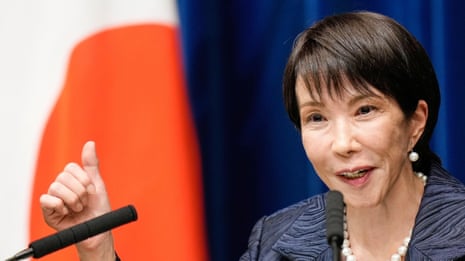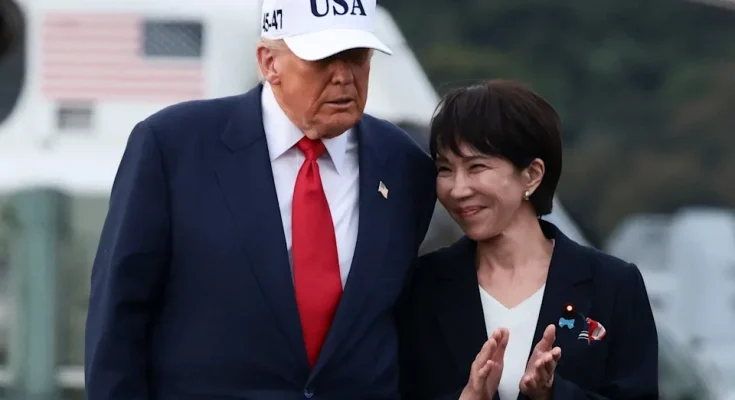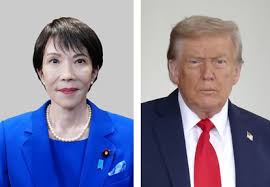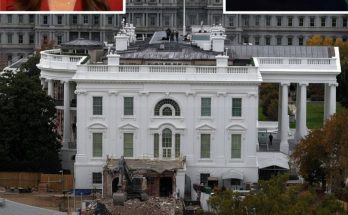When Donald Trump landed in Tokyo last week to meet Japan’s newly elected Prime Minister Sanae Takaichi, the world expected a routine diplomatic exchange — a congratulatory visit, a photo op, and a few soundbites on trade and defense.
But what followed was anything but routine.
From the moment Trump appeared alongside Japan’s first female prime minister, cameras captured a series of gestures and expressions that have since fueled global speculation. Many observers now believe the visit carried undertones —
both personal and political — that extend beyond the official agenda.
Here are the three most talked-about moments from the trip.
1️⃣ The Unexpected Contact on Stage

During the joint press conference, Trump repeatedly placed his arm around Takaichi’s shoulder — a gesture rarely seen in Japanese diplomatic culture, where formality and distance are paramount.
At one point, he even leaned close as she finished her remarks, smiling as though oblivious to protocol.
Takaichi, visibly composed, managed to maintain her poise, bowing lightly before stepping back. Yet, the interaction left the room uneasy.
Japanese commentators on NHK described the display as “awkward, bordering on undiplomatic.”
“Physical gestures carry weight in Japan,” said Professor Aiko Morita of Waseda University. “What might seem casual in the U.S. can appear overly familiar — even intrusive — here.”
As the two leaders left the podium, Trump again reached for Takaichi’s hand, giving it an unusually prolonged shake and smiling warmly, as if reluctant to end the moment.
2️⃣ The Distracted Gaze During the Signing Ceremony

When the leaders sat down to sign a bilateral cooperation agreement on trade and rare minerals, observers noted that Trump appeared distracted.
As photographers captured the moment, Trump’s gaze lingered on Takaichi instead of the documents before him.
At one point, when a reporter shouted a question about tariffs, Trump didn’t respond immediately — he appeared to be watching her instead.
Video clips of that moment went viral within hours, with captions such as
“Trump can’t take his eyes off Japan’s PM.”
Political analysts say the optics were “highly unorthodox” for an international signing ceremony.
“It’s not the content of the deal people remember,” said BBC correspondent Mark Williams. “It’s the chemistry on camera.”
3️⃣ The Farewell That Felt Too Familiar

As Trump departed the guesthouse, instead of a formal bow or handshake, he reached again for Takaichi’s hand, pulling her slightly closer for a brief exchange that microphones didn’t catch.
Witnesses described the moment as “unusually personal.”
While Trump later described the meeting as “a tremendous success with a tremendous leader,” his demeanor suggested a deeper fascination.
For her part, Takaichi remained professional, later telling Japanese media that she “valued the cordial and constructive discussion” and viewed the interaction as “a reflection of the friendship between our nations.”
What Lies Beneath the Optics?

Experts are divided over what Trump’s behavior means. Some believe it reflects his characteristic spontaneity and disregard for diplomatic convention. Others see it as a deliberate attempt to project warmth — or dominance — toward Japan’s new leader.
“Trump thrives on unpredictability,” said Dr. Ken Oshiro, a Tokyo political psychologist. “He knows that attention, even controversy, reinforces his image as a larger-than-life figure.”
Still, in Japan — where etiquette and perception shape politics as much as policy — such gestures could complicate Takaichi’s domestic image. Critics fear that Trump’s physical familiarity could overshadow her diplomatic debut as Japan’s first female prime minister.
Behind the Curtain
Despite the public spectacle, the visit did produce tangible outcomes: a renewed trade framework, cooperation on semiconductor supply chains, and commitments to joint defense research. Yet all these achievements are now competing for headlines with viral clips of Trump’s behavior.
For Takaichi, the challenge is clear — to ensure that history remembers the policy, not the optics.
For Trump, the trip reinforced his instinct for spectacle: even abroad, he can turn diplomacy into theater.
Whether it was confidence, charm, or something more ambiguous, his Japan visit once again proved that Donald Trump never leaves a room without making it about himself.





